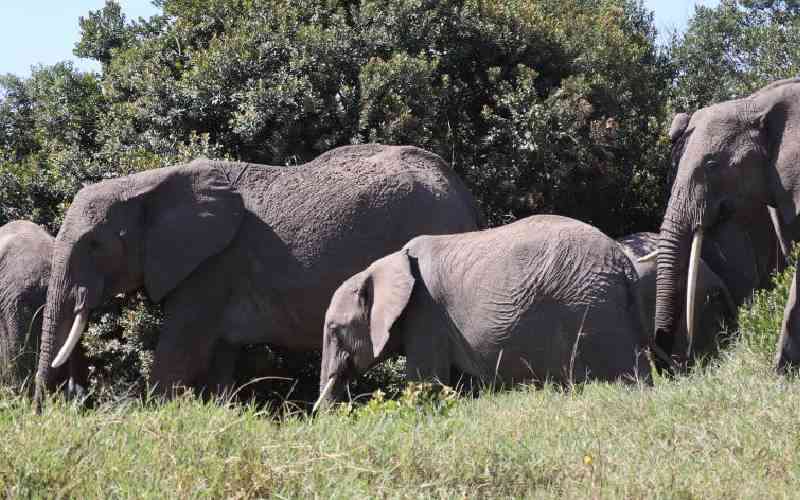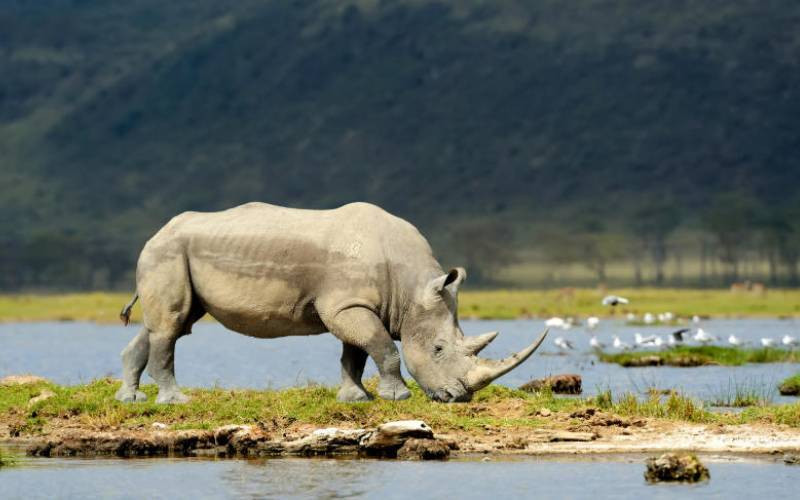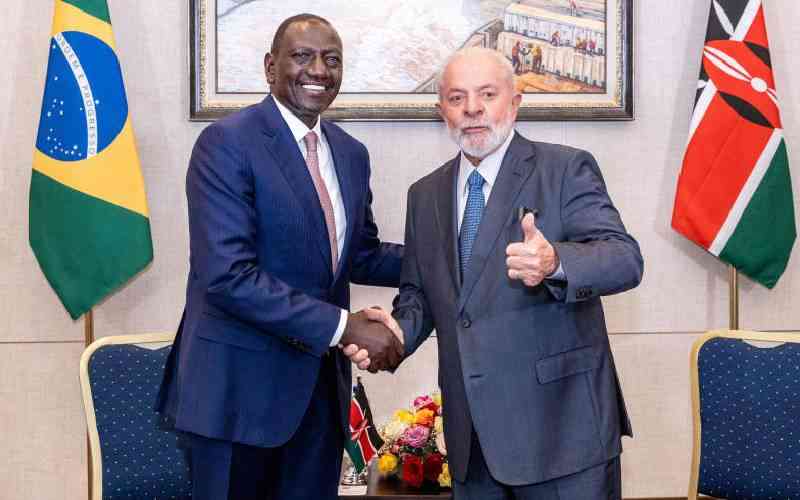By JUMA KWAYERA
Kenya: Sometime last month, Kenyan security agents assisted by their US and Chinese counterparts made a significant breakthrough when they pounced on a crime lord of Chinese origin, believed to be behind the current wave of illegal trafficking in ivory and rhino horns.
The arrest of Li Xue brought with it the realisation that the new Conservation and Wildlife Management Act 2013 was beginning to bite, at last.
The arrest and repatriation of Xue was a significant turning point in the war against poaching, which in the past three years has been on a climb, not just in Kenya, but also in Tanzania and Uganda, where it is rampant, thanks to laxities in park security. Around the same time, two Chinese traffickers faced hefty court fines and long prison terms for dealing in illicit ivory.
Kenya Wildlife Service (KWS) acknowledges the threats posed by illegal trophy hunters but says the drop does not necessarily mean poaching has been on the ascent.
KWS spokesperson Paul Mbugua said the decline was a function of multiple factors, including natural attrition and migration.
Sh20 million fine
Mr Mbugua explains: “The numbers of elephants have dropped in Tsavo. They, however, are within a range that is considered healthy for the ecosystem. There are factors that can lead to a reduced population. These include poaching, natural attrition, migration to other ecosystems and also predation of the young. The next census will be critical in ascertaining the exact trend of this population.”
While Kenya has recorded success in clamping down on poaching, a new report by Internal Environmental Security Sub-Directorate identifies Tanzania as the new hub for poachers.
The report estimates that 30 elephants are butchered in Tanzania daily, translating to10,000 annually. By comparison, poachers killed about 800 in Kenya last year.
To illustrate the seriousness of poaching in Tanzania, which affects Kenya’s herds, the country has seen a decline in stocks in Selous Game Reserve from 70,000 in 2006 to about 13,084 at present. KWS says over the same period, Kenya’s stocks had stabilised to sustainable levels.
A perusal of recent reports on underworld activities of the crime rings involved in poaching suggests the 1,573 that died in Tsavo National Park alone since the last count in 2011 may have been enough to finance terror activities in Kenya and Somalia.
An Interpol report says, “The majority of large scale ivory seizures have occurred in maritime ports. The ivory is hidden in shipping containers, and it is usually concealed by other, lawful, goods. By these methods, East African ivory originating primarily from Tanzania has been transported directly to Asian maritime transit hubs, as well as through Uganda and Kenya to Asian hubs and consuming nations, with fewer known shipments to the Middle East.”
Poaching has been linked to terrorism, but it is a sensitive subject that KWS shies away from. Mr Mbugua was reluctant to shed light on how or if Al-Shabaab is linked to the slaughter of protected wildlife in Kenya.
Research finding suggest otherwise. A report based research conservationist Andrea Crosta published mid last month in The Independent of Britain demonstrates in detail the symbiotic connection between poaching and international terrorism. Mr Costa, a former military officer with a strong network of informers in Al-Shabaab, says poaching in Kenyan game parks finances the terror operations inside and outside Somalia.
Stay informed. Subscribe to our newsletter
KWS says support by main consumers of ivory and the new Conservation and Wildlife Management Act, whose impact began to be felt when a Kenyan court slapped a Chinese ivory trafficker with a Sh20 million fine – up from the Sh30,000 ceiling provided for in the previous law – offers low incentives to criminals.
“The coming into force of the new laws is good for conservation. The poachers and those bent on committing wildlife crimes will have to think twice as the cost of failure in their endeavours is very high.
The high fines will definitely make poaching unprofitable. The fines coupled with custodial sentences will also serve as a deterrent. The future of conservation looks promising,” Mbugua explains.
The Independent, citing UN and Costa, reports, “Kenya’s long and porous border with Somalia makes it relatively easy for militants to hurry the ivory, poached in Kenya and elsewhere in Africa, across the frontier into a largely lawless State that has fostered militants, pirates and gunrunners. From there, it reaches ports on the Somali coast, many of which are controlled, or at least heavily influenced, by Al-Shabaab.”
Crosta estimates that Al-Shabaab generates up to £365,000 (Sh51.83 million) per month from ivory, which accounts for up to 40 per cent of the salaries paid to militants.
China and the US were until last month the leading consumers of ivory and its products. On his last visit to Africa, US President Barack Obama pledged tighter surveillance on movement of illicit ivory originating from the continent.
According to this week’s edition of Africa Confidential, an international investigative magazine, “The head of the poaching and smuggling network, known only as Xue and branded a cheapskate by the Chinese media for the low rates of pay earned by his gang, was extradited to China (from Nairobi), where further arrests were made. Wildlife poaching is now a matter of national security for African countries. The Global Financial Integrity organisation reckons that the global illegal wildlife trafficking racket is worth some $19 billion (Sh16.72 trillion) a year and ranks as the fourth-largest transnational crime in the developing world.”
Al-Shabaab boats
The UN Security Council report number S/2014/42 released last month says it “investigated the widespread killing of elephants for ivory in eastern Democratic Republic of the Congo, an activity that finances armed groups and criminal networks in the region”. It adds that tusks of one elephant can sustain Al-Shabaab militiamen for a month.
Against this backdrop, the killing of 1,573 elephants in Tsavo alone sheds light on how serious a threat poaching is to elephants, which in 1989 were listed by the Convention on International Trafficking in Endangered Species (Cites) of flora and fauna as threatened with extinction.
Crosta says proceeds from smuggled ivory “change hands in the no-man’s land between Kenya and Somalia”.
“Al-Shabaab has small boats in ports such as Marka and Barawe, which transport the ivory shipments.”
Costa said the ivory boats do not just come from China, where demand for ivory is known to be high.
They also come from South Korea, Iran, Turkey, and of course, the Gulf, Dubai,” reports The Independent, which is sponsoring the London conservation conference.
 The Standard Group Plc is a
multi-media organization with investments in media platforms spanning newspaper
print operations, television, radio broadcasting, digital and online services. The
Standard Group is recognized as a leading multi-media house in Kenya with a key
influence in matters of national and international interest.
The Standard Group Plc is a
multi-media organization with investments in media platforms spanning newspaper
print operations, television, radio broadcasting, digital and online services. The
Standard Group is recognized as a leading multi-media house in Kenya with a key
influence in matters of national and international interest.
 The Standard Group Plc is a
multi-media organization with investments in media platforms spanning newspaper
print operations, television, radio broadcasting, digital and online services. The
Standard Group is recognized as a leading multi-media house in Kenya with a key
influence in matters of national and international interest.
The Standard Group Plc is a
multi-media organization with investments in media platforms spanning newspaper
print operations, television, radio broadcasting, digital and online services. The
Standard Group is recognized as a leading multi-media house in Kenya with a key
influence in matters of national and international interest.







